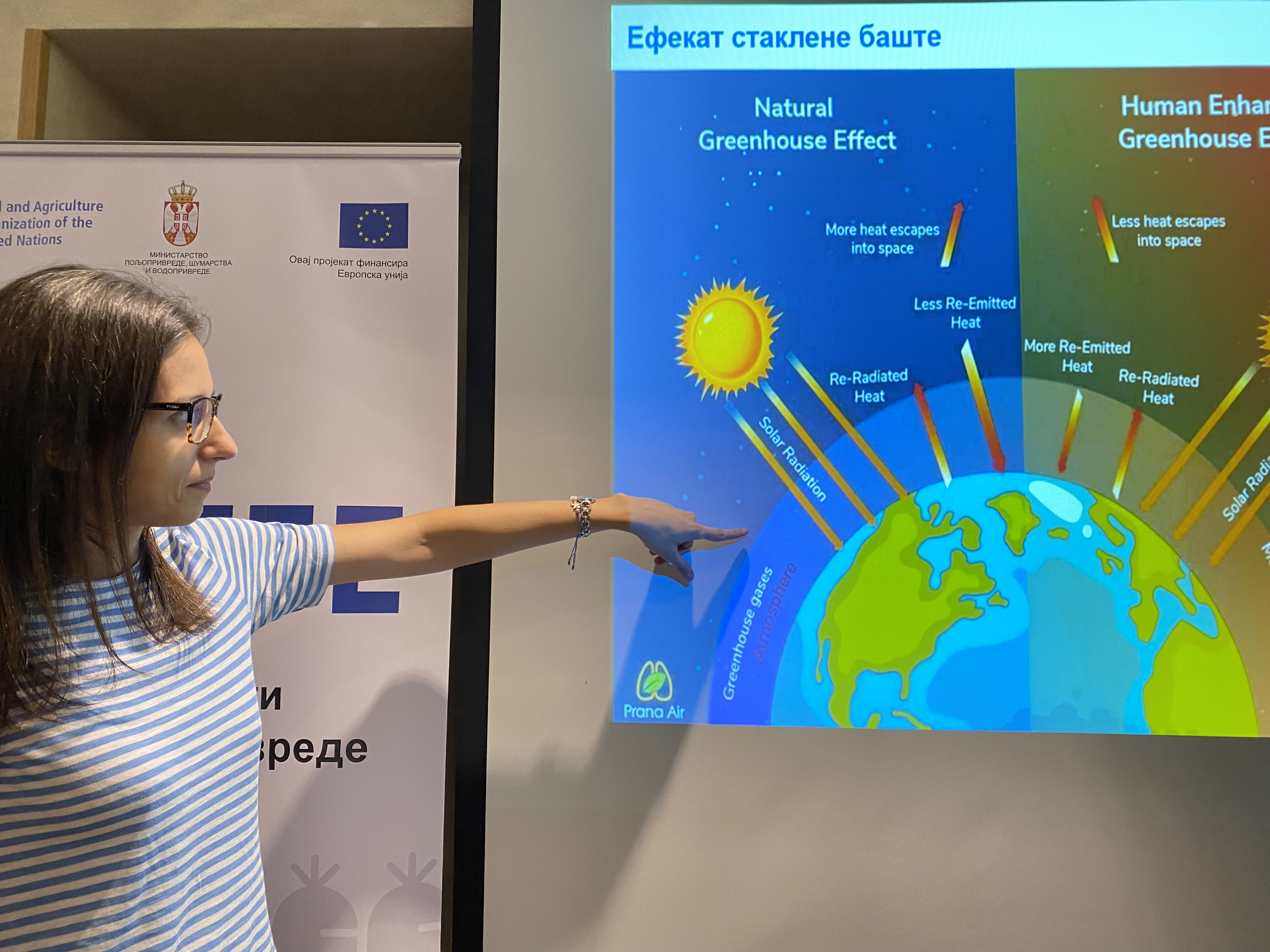Since the beginning of the industrial revolution, concentration of carbon dioxide in the air has continuously increased to reach 50% higher levels today compared to pre-industrial times. As a consequence, temperature rises and this increase amounts to 1.2 degrees. All these changes happen ten times faster than in the past, leaving little time for people to adapt. And not only to people, but also to plants and animals.

This was the introduction to the training on climate
change in agriculture, held from September 14 to 16, 2022 at Srebrno Jezero. It
is the first in a series of six trainings organized by the Ministry of
Agriculture, Forestry and Water Management and the Food and Agriculture
Organization of the United Nations (FAO) with the support of the European
Union. The trainings are based on needs for professional development of
employees in the ministry related to climate change, adaptation to it, and risk
management in agriculture.
"The consequences of climate change are everywhere on the ground in Serbia. It is important to create a system of measures to mitigate its consequences such as hail, drought, floods, and related disasters. Also, cooperation between the line ministry, local self-governments and FAO is very important", pointed out Aleksandar Bogićević, Assistant Minister.

With a reminder that climate is not a static but
variable measure, basic terms, concepts, and scientific forecasts related to
climate change were presented. The focus was placed on adjustment measures so
that agriculture could meet the changes as readily as possible.
"Due to drought, corn yields may be reduced by up to 60% this year. This is why gatherings of this kind are extremely important as they offer a space to exchange experiences, opinions and find potential solutions for these problems," Bogićević added.

Representatives of the Ministry identify risks of climate change
Climate change is global, but its effects are local. It affects the availability and costs of food production.
"We are faced with the need to produce more food, without endangering the environment, and all this with more frequent natural disasters. That is why FAO supports the networking of different partners such as the line ministry, professional advisory services, municipalities, or secondary schools. And today's training on climate change in agriculture is a good example of that," concluded Aleksandar Mentov, FAO National Coordinator.
Did you know?
- We define climate as what we expect to happen, while a definition of weather is what actually happens. Climate is a dynamic measure and it gives us information about the range of weather events in a location
- Grapes are one of the most drought-resistant cultures, while corn is often threatened by drought. In 2022, drought might reduce corn yields by up to 60% in Serbia
- The increase in average annual temperatures is associated with the greenhouse gas emissions. But the greenhouse effect is not a solely negative phenomenon: thanks to it the earth is a pleasant place to live with an average temperature of 15 degrees. Without it, the temperature on earth would be -18 degrees
- Climate change researchers are among the biggest users of supercomputers
- In Serbia there are about 500 000 agricultural farms, out of which 99% are family farms
Photo credits: FAO Serbia